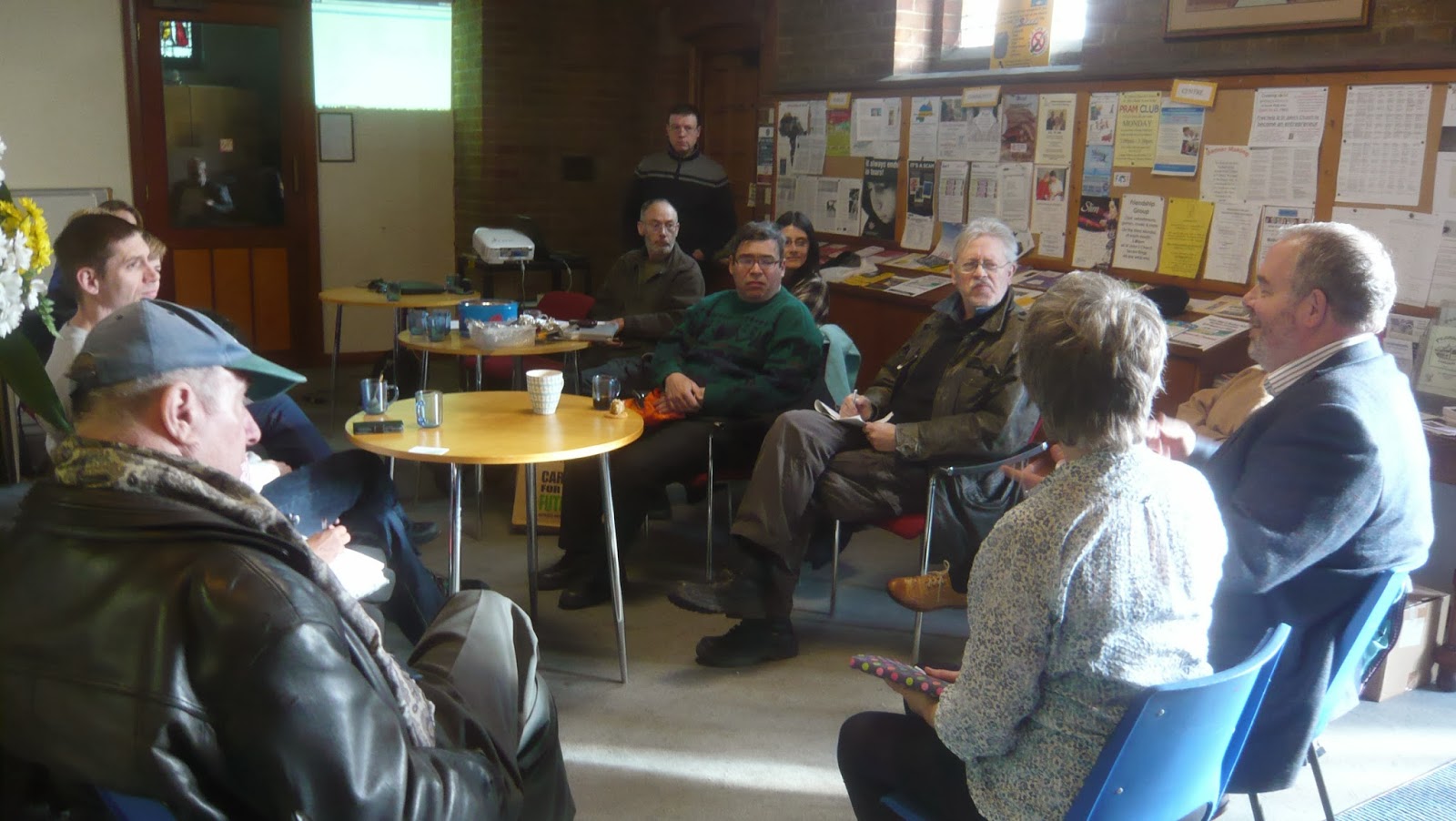In
Figuring Faith Anitra Nettleton highlights South African artists creating work with Christian subjects:
Most of
Father Frans Claerhout’s artworks depict biblical themes but he uses the people and ordinary lives of those who surround him to depict his spiritual vision. The
Christ and the Other series perhaps most clearly expresses his belief that Christ must be experienced by each individual, in their own way. The loose brush strokes, bright arbitrary colours and the heavy black outlines used in his paintings show the influences of the Expressionists and Fauvists.
'In a review of an exhibition of
[Pranas] Domsaitis’ paintings in September 1962, Graham Watson wrote,
his work possesses something of Chagall’s enchanting visions, the guileless piety of Rouault, the resonant colour of the Expressionists and the intuitive wisdom of the peasant (Verloren van Themaat, 1976). Mykolas Drunga writes of Domsaitis’ work:
Although the artist never formally allied himself with any specific school, he moved from the romantic realism and what the well-known art critic Karl Scheffler called the ‘spiritual impressionism’ of his youth towards an ever more personal Expressionism ... According to Berman (1996), he is unique among South African painters in that much of his subject matter was devotional in spirit, and even his interpretation of the vast South African landscape was
infused with a spiritual intensity." "
His painting took on a melancholy stillness and transcendental premonitions. His landscapes, common human figures are filled with deep symbolism. Especially important is the deeply experienced archetypes of his work – the journey and the themes of travelling – expressed realistically as well as expressions of Biblical studies.'
Judith Mason, '“an agnostic humanist possessed of religious curiosity,” as she puts it, once commented that “… the bulk of Judeo-Christian thought is part of our culture, even if … the Russian
Revolution has superceded it and will in time assume its own mythical proportions. The Judeo-Christian myths are instinct with drama, and time has eroded them into skeletons which can be
clothed in a richer fabric than orthodoxy. The painter of religious themes, whether he does so as a
reflection of his faith or as an exploration of his doubts, makes icons." ... Mason’s “trajectory
suite of religious iconography,” ... includes paintings such as The Plague (1980), Pièta (2003)
and Judas (1996).'
Understanding the sacred within the commonplace, and presenting these images was a hallmark of
Peter Schütz' work, as in
Durban Icon, in the permanent collection of the Durban Art Gallery, which honours the rickshaw man – the work of a common labourer, with a halo and flames of light.
'A feature of this work was to create an inviting tension between images of spiritually and lightheartedness. He found peace and profundity in nature wherever he was and organic life forms were constantly emerging from his work.'
Azaria Mbatha 'is on record as saying that he wished to ‘Africanise’ the whole Bible, and an appreciation of his work must also take into account the concurrent rise of a black theology in southern Africa. Mbatha claims that he wants to reconcile Christian values with the myths and realities of his African, specifically Zulu, heritage. However, it should not necessarily be assumed that his use of black figures is consistent with this aim. Mbatha has also used black and white faces in his religious prints for aesthetic reasons, where the colour was chosen purely for artistic reasons and as a pattern maker
par excellence he would have been acutely sensitive to these design needs. Inextricably linked with the legacy of the
Evangelical Lutheran Art and Craft Centre at Rorke’s Drift, Mbatha’s impressive body of work over the years justifies his place as one of the most important printmakers in South Africa.'
Religious subjects feature prominently in the work of
John Muafangejo, reflecting his strong religious background. 'But, even here, Muafangejo also commented on the political and social role of the Church in resisting and opposing an inhumane and unjust regime. Many of his prints are of an autobiographical nature and refer to dramatic or humorous incidents in his life. But the references to his personal life are mediated by a gentle humour and an objectivity which transcends the merely anecdotal.'
'The iconography of
[Johannes] Segogela’s work is essentially religious. Like
[Jackson] Hlungwani (qv.) he regards his work as ‘a means of proselytising the public into the Christian faith’. However, many of these themes are adapted – and the modern world intrudes in the most engaging and witty ways. In one work, for example, angels record on video camera an epic battle ensuing between the devil and another angel. And Nelson Mandela, astride a leopard, tops a walking stick in a contemporary reworking of traditional walking sticks from the region.'
Making, fabricating, reproducing was central to
Colin Richards' sense of purpose as a creative person: "So are the large and messy questions of meaning. Art is a relational affair, and it seems to me that the increasingly seamless semiotic packaging of the worlds in which we live sets limits on our horizons of ways of being and doing. In my creative work I am energised by puzzles of power and powerlessness. My preferred mode of expression has always involved strong pictorial illusionism (which is still magical to me, as it is to all children), and also in reproduction and repetition. In matters of power my focus tends to be on formal religion and its iconographies, on family, especially fatherhood and boy childhood, and on the cultivation of 'nature' (rocks, trees, animals, insects... mothers, fathers)."
----------------------------------------------------------------------------------------
Paul Buchanan -
Mid Air.




















